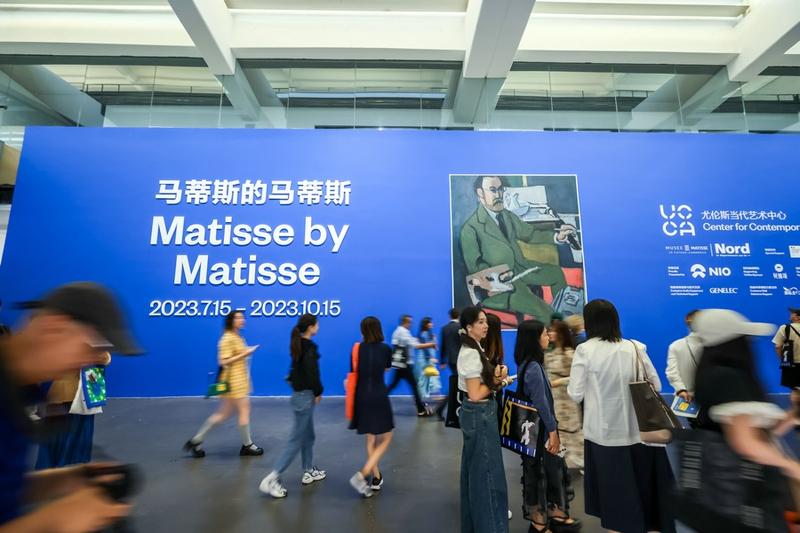 Matisse by Matisse, the first exhibition of French modern art master Henri Matisse (1869-1954), opened in the Chinese mainland at UCCA Beijing on July 13, 2023. (PHOTO / UCCA CENTER FOR CONTEMPORARY ART)
Matisse by Matisse, the first exhibition of French modern art master Henri Matisse (1869-1954), opened in the Chinese mainland at UCCA Beijing on July 13, 2023. (PHOTO / UCCA CENTER FOR CONTEMPORARY ART)
With 30,000 early-bird tickets snapped up before its opening on Thursday, Matisse by Matisse, the first exhibition of French modern art master Henri Matisse (1869-1954) in the Chinese mainland at UCCA Beijing, is undoubtedly the hottest ticket in town.
READ MORE: Without fanfare, anime master Miyazaki's likely final film opens
Bringing together more than 280 works by Matisse, along with handicrafts and other objects he collected, the show marks the most comprehensive presentation in China to date of the life and work of Matisse—founder and key figure of Fauvism, one of the most influential art movements of the 20thcentury.
This inspired the title of the UCCA exhibition Matisse by Matisse, highlighting the role of the master as a “curator”, who himself would tell the audience his work and life
All showpieces, encompassing media including oil painting, sculpture, ink drawings, prints, cut-outs, illustrations, and textiles, are drawn from the collection of the Matisse Museum in Le Cateau, a museum in the artist’s hometown in the North of France. The museum holds one of the world’s largest collections of Matisse’s works, among the Matisse Museum in Nice, Centre Pompidou in Paris, and the Baltimore Museum of Art in Baltimore, the US.
Two years before his death, Matisse donated the most prized works from his collection to his hometown, forming the core collection of the Matisse Museum in Le Cateau. He even took great care in arranging the display of artworks in the gallery spaces and “the idea was to tell his life of work, research, and discovery,” said Patrice Deparpe, the museum’s director and head curator, in a video speech at the opening.
READ MORE: Shipwreck artifacts go on show for first time
This inspired the title of the UCCA exhibition Matisse by Matisse, highlighting the role of the master as a “curator”, who himself would tell the audience his work and life.
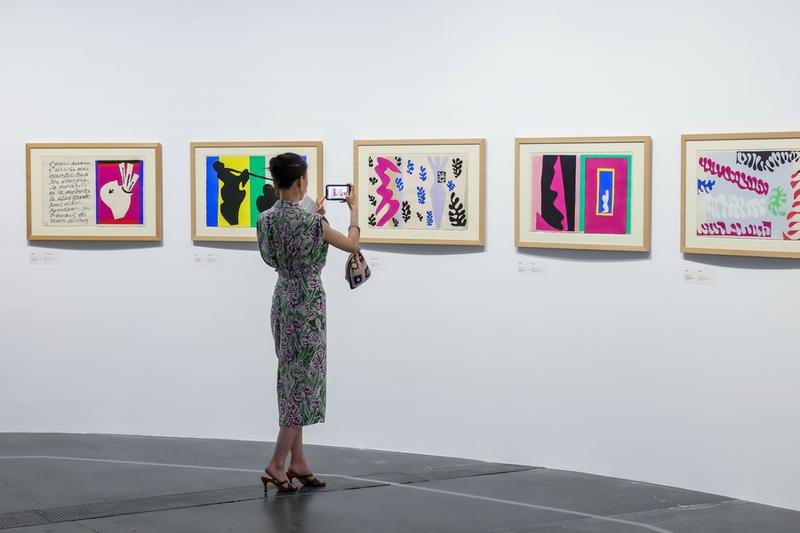 A visitor takes photos of the paper cut-outs of Henri Matisse at UCCA Center for Contemporary Art in Beijing on July 13, 2023. (PHOTO / UCCA CENTER FOR CONTEMPORARY ART)
A visitor takes photos of the paper cut-outs of Henri Matisse at UCCA Center for Contemporary Art in Beijing on July 13, 2023. (PHOTO / UCCA CENTER FOR CONTEMPORARY ART)
Unfolded into 11 sections, the exhibit invites visitors to explore how Matisse started as an artist, how he invented Fauvism, what he created after the First World War, what inspiration he gained from his voyage to Tahiti in the 1930s, how he used paper cut-outs as a new medium, how his career culminated in the design of the Vence Chapel, and how his art influenced China’s modern art movement between the 1920s and 1940s.
Born into a textile family that had been in the business for over 300 years, Matisse studied law in Paris and became a court administrator in his hometown after gaining his qualification
“Matisse is a figure who constantly challenged and reinvented himself. We know he came to art as an adult. Art was way outside of what had been a very predictable life as a potential lawyer. Throughout his life, he accomplished thing after thing and came up with new styles,” remarked UCCA director Philip Tinari.
Born into a textile family that had been in the business for over 300 years, Matisse studied law in Paris and became a court administrator in his hometown after gaining his qualification. In 1889, at the age of 30, he took to painting while recuperating from appendicitis. He went against his father’s wishes and gave up the law for art, with the ambition to make art that was “something like a good armchair which provides relaxation from physical fatigue.”
He went to Paris to pursue art in 1891. The following 10 years saw him frequent the Louvre, tirelessly copying the works of artists such as Raphael (1483-1502), Nicolas Poussin (1594-1665) and Jean Simeon Chardin (1699-1779). During this period, the European art scene was moving on from the strictures of Impressionism which emphasizes the spontaneous and naturalistic rendering of color and light.
READ MORE: A musical celebration of compassion
Avant-garde artists such as Paul Cezanne (1839-1906), Paul Gaugin (1848-1903), Vincent van Gogh (1853-90), and Georges Seurat (1859-191) were pushing painting into the symbolic realm and deeming that color could be independent of form and composition as an emotional and aesthetic bearer of meaning.
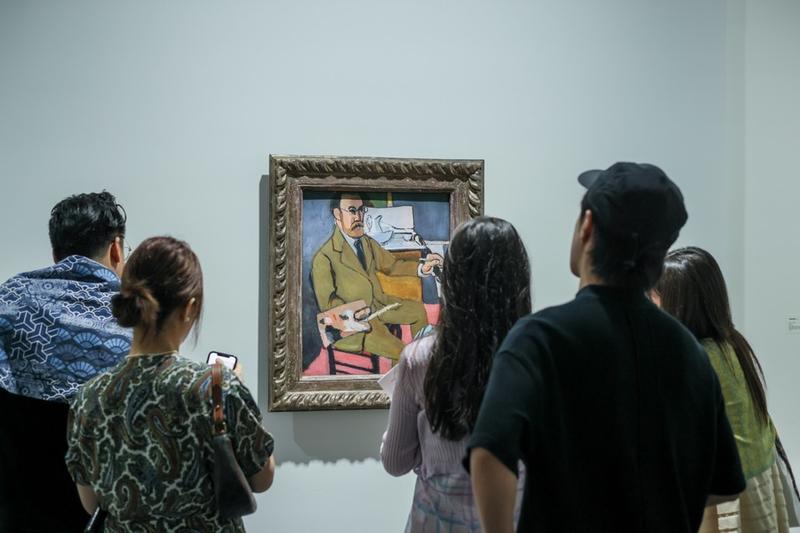 Visitors view Henri Matisse’s Self-Portrait (1918), one of the four self-portraits on canvas the artist painted throughout his life, at UCCA Center for Contemporary Art in Beijing on July 13, 2023. (PHOTO / UCCA CENTER FOR CONTEMPORARY ART)
Visitors view Henri Matisse’s Self-Portrait (1918), one of the four self-portraits on canvas the artist painted throughout his life, at UCCA Center for Contemporary Art in Beijing on July 13, 2023. (PHOTO / UCCA CENTER FOR CONTEMPORARY ART)
Matisse, together with his friends Maurice de Vlaminck (1876-1958) and Andre Derain (1880-1954), shared an admiration for van Gogh’s vivid palette and Gaugin’s primitive tastes. Like many other young artists living in the fin-de-siècle Paris, they were entranced by the simplicity and freedom they found in African artifacts.
In the first few years of the early 20th century, the three artists began to take a new approach to their creations in which color and emotional expression were given priority over literal representation. They created hundreds of riotously colorful and emotionally uninhibited paintings, blasting out a message that the world was a wonderful place. Audiences to the UCCA show can spot this artistic turn of Matisse in Collioure, Sun Street (1905) and Seashore in Collioure (1905), both inspired by the sun-kissed fishing village in the South of France.
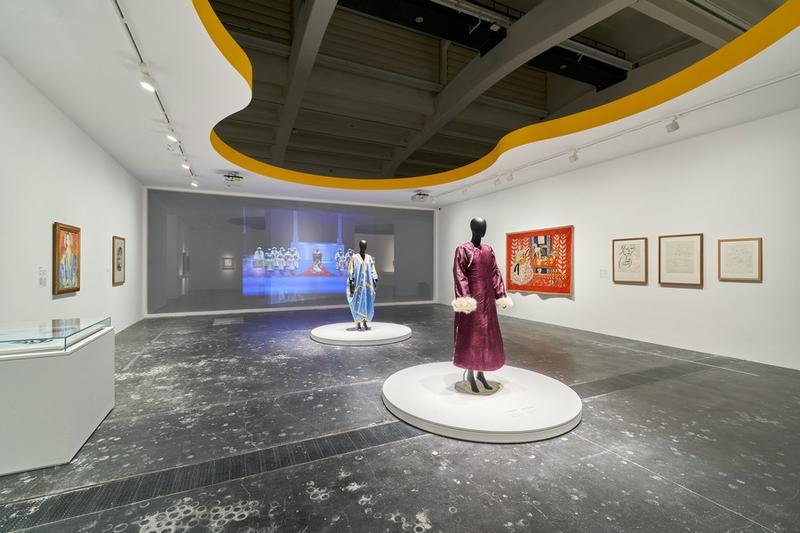 A section of Matisse by Matisse showcases the clothing from Henri Matisse’s collection and related artworks. (PHOTO / UCCA CENTER FOR CONTEMPORARY ART)
A section of Matisse by Matisse showcases the clothing from Henri Matisse’s collection and related artworks. (PHOTO / UCCA CENTER FOR CONTEMPORARY ART)
When they exhibited their shockingly colorful paintings at the 1905 Salon d’Automne, their psychedelic, expressive offerings, on display in the same room, were met with disparagement from conservative critics. Influential art critic Louise Vauxcelles (1870-1943) called their paintings of “les fauves” (wild beasts), thus providing the name of Fauvism, a new art movement that wielded influence on later modern art movements such as Expressionism and Abstract Expressionism.
The influence of Matisse and Fauvism on Chinese modern art is also spotlighted at the artist’s China solo
The influence of Matisse and Fauvism on Chinese modern art is also spotlighted at the artist’s China solo. Through archival materials and works by major artists including Liu Haisu (1896-1994), Ting Yin Yung (1902-1978) and Guan Liang (1900-1986), UCCA deputy director of research Huang Jiehua traced how Matisse’s art spread from France to China (often via Chinese artists studying in Japan), and how his style influenced the modern painting movement that emerged from the 1920s to the 1940s.
Matisse’s invention of paper cut-outs, a breakthrough in the later years of his artistic career, is another highlight of the UCCA show. Calling the technique “drawing with scissors”, Matisse initially used paper cut-outs for testing ideas for larger works of art. He sliced sheets of colored paper in long, sinuous lines, which produced elegant, minimal and immediately appealing artworks. Many works on view show his paper cut-outs used in the design of murals, textiles, stained glass windows, books and more.
 Artworks by Chinese painters who were inspired by Henri Matisse and Fauvism are on display at Matisse by Matisse, at UCCA Center for Contemporary Art in Beijing. (PHOTO / UCCA CENTER FOR CONTEMPORARY ART)
Artworks by Chinese painters who were inspired by Henri Matisse and Fauvism are on display at Matisse by Matisse, at UCCA Center for Contemporary Art in Beijing. (PHOTO / UCCA CENTER FOR CONTEMPORARY ART)
In 2014, the Tate Modern in London and MoMA in New York mounted large-scale exhibitions showing only Matisse’s cut-outs, which emphasized the artist’s renewed commitment to form and color in the final chapter of his long career. Exhibition designer Pascal Rodriguez also borrowed inspiration from this medium when designing the roofs of UCCA’s gallery spaces, which evoke the openings left by the artist’s cut-outs.
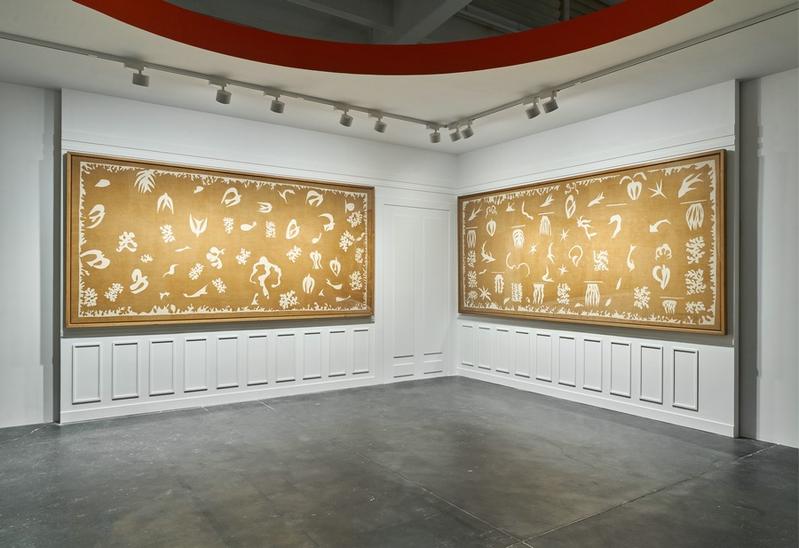 Oceania, The Sky (1946), and Ocieania, The Sea (1946), are on display at Matisse by Matisse, at UCCA Center for Contemporary Art in Beijing. (PHOTO / UCCA CENTER FOR CONTEMPORARY ART)
Oceania, The Sky (1946), and Ocieania, The Sea (1946), are on display at Matisse by Matisse, at UCCA Center for Contemporary Art in Beijing. (PHOTO / UCCA CENTER FOR CONTEMPORARY ART)
Tinari said he was especially moved and struck by Matisse’s humility when reading his speech to his town people in which he described himself, not as a great artist, but simply as a medium.
I finally discovered myself and understood that all the hard work in my life was for the great human family, to whom some of the fresh beauty of the world was to be revealed through me. I have thus been nothing more than a medium.
Matisse
“… I finally discovered myself and understood that all the hard work in my life was for the great human family, to whom some of the fresh beauty of the world was to be revealed through me. I have thus been nothing more than a medium,” said Matisse in his speech to inaugurate the Matisse Museum in his hometown in 1952.
“Matisse touches all audiences because his message is universal. He speaks of happiness, beauty, harmony, and tranquility, and I hope the Chinese public will appreciate this dimension of Matisse’s work,” Deparpe said.
The French curator concluded that the collection that Matisse donated to his hometown and the museum he made with it is a gift and legacy, not only to Le Cateau and France but to all humanity, to encourage future generations in the pursuit of happiness.
ALSO READ: Wisdom prevails as martial arts drama boosts genre
During the exhibition, UCCA will organize a medley of public programs, guiding participants to explore Matisse’s artistic career, art and history at the turn of the 20thcentury, and the artist’s influence on the Chinese modern art movement. Programs include conversations, workshops, film screenings and a performance.
The exhibition runs through Oct 15 and will subsequently travel to UCCA Edge in Shanghai.


